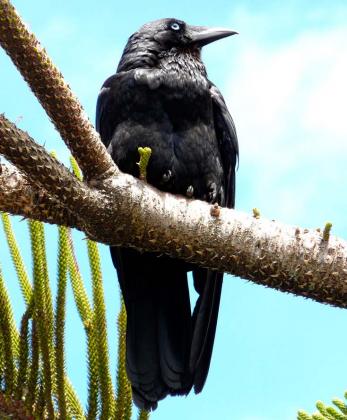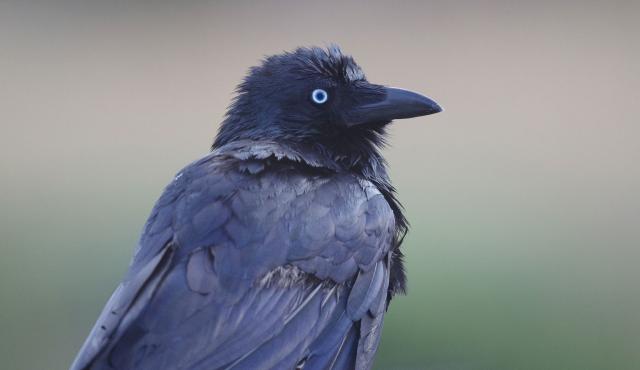A range of teacher professional learning programs will be developed to accompany the Biodiversity of the Western Volcanic Plains online outreach...





Little Raven
Corvus mellori
Breeds from April through to December. Both sexes build a stick nest in the fork of a tree up to 10 m high. Clutch size is 4-5 eggs and they are incubated by the female for 19-20 days. Both sexes feed the young.
| Details | Description |
| Type | Bird |
| Group | Raven |
| Identifying Characteristics | |
| Distinctive Markings | Short, fork-tipped throat hackles. Beak smaller and more curved than the Australian Raven. |
| Diet | Omnivore. Feeds mainly on vegetable matter including grains and fruits. Will also eat insects, small animals, eggs, refuse and carrion. |
| Habitat | Scrub, agricultural areas, grazing pasture, woodlands, treeless plains, coasts and suburbs. |
| Native Status | Native to Australia |
| Sounds | "Kar - kar - kar" or "ark - ark - ark - ark". |
| Taxonomy | |
| Phylum | Chordata |
| Class | Aves |
| Order | Passeriformes |
| Family | Corvidae |
| Genus | Corvus |
| Species | mellori |

Distribution maps indicate current and historic locations where species have been sighted.
Source: Atlas of Living Australia
| Conservation Status | |
| DEPI Advisory List | Not listed |
| FFG Act | Not listed |
| EPBC Act | Not listed |
The conservation status of species is listed within Victoria and Australia.
The Department of Environment and Primary Industry (DEPI) Advisory List consists of non-statutory advisory lists of rare or threatened flora and fauna within Victoria.
The Flora and Fauna Guarantee Act 1988 (FFG Act) lists threatened species in Victoria. Under the Act, an Action Statement is produced for each listed species.
The Environment Protection and Biodiversity Conservation Act 1999 (EPBC Act) is the Australian Government’s key piece of environmental legislation, listing nationally threatened native species and ecological communities.



